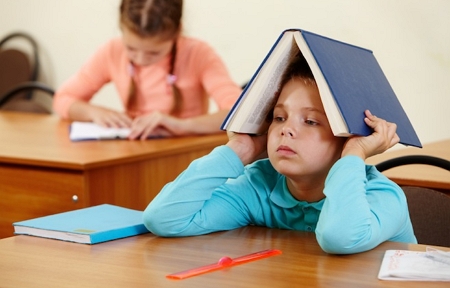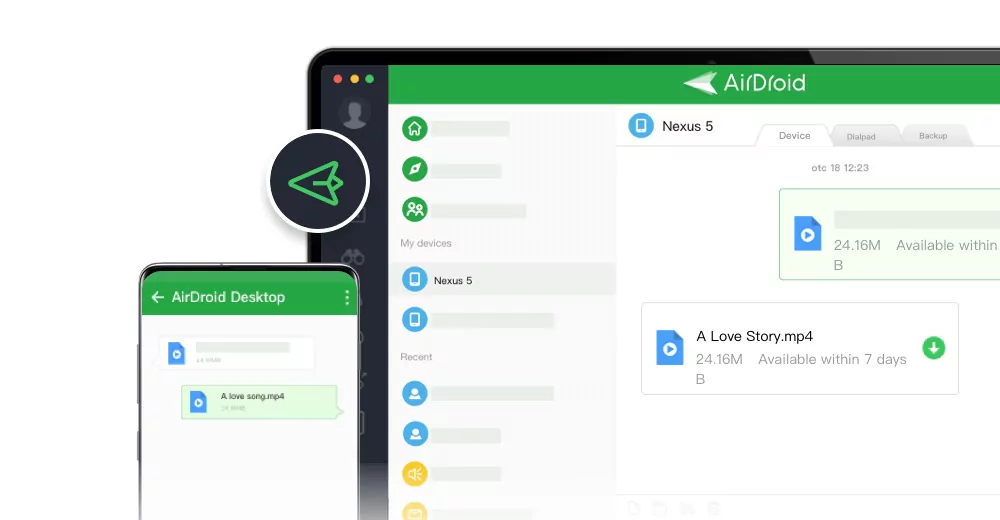How to Help a Child with Sensory Processing Disorder
Sensory processing disorder is one of the neurological conditions that affects a significant percentage of our population. In fact, it is estimated that roughly 1 in 6 children is struggling with this condition. Additionally, this number can significantly increase since SPD is prevalent in certain groups. According to JAMA Paediatrics, SPD prevalence can rise to as high as 80% to 100% in those groups.

But in which groups precisely does the risk rise this high?
Well, children with complications such as Down syndrome, fetal alcohol syndrome, autism spectrum or a history of prematurity, among other similar conditions, are likely to have SPD. So, parents with kids having conditions should be cautious.
It's also worth noting that SPD is also in the same family as ADHD (both neurological conditions), so handling it needs extensive care and tailored solutions to ensure effective treatment.
And so, as a parent, guardian or caregiver, you might wonder how I can help the child with this condition. Well, here we will share several ways on how to help a child with sensory processing disorder. So, keep reading!
What's Sensory Processing Disorder (SPD)?
First, let's understand what this disorder is to understand how to treat or manage it.
Sensory Processing Disorder (SPD) is simply a neurological condition also known as Sensory Integration Dysfunction. This disorder usually affects how your child's brain processes and responds to sensory information from the environment as well as the body.
In simple terms, this condition creates difficulties in responding and managing sensory inputs. What we mean is when a child has SPD, their senses might not work as smoothly as they should in different conditions.
So, what problem does this pose?
Well, this can make it challenging for your child to handle different kinds of sensory inputs like bright lights, rustling leaves, etc.
So, how do kids with SPD respond then?
In fact, it can only go two ways:
- Your child could become super sensitive (like, everything feels too much).
- Alternatively, your child might not feel things as much as they should (kind of like tuning things out).
This sensory stuff that we are referring to includes stuff like touch, sound, what they see, what they taste, and what they smell.
For example, if your child enters a room with very bright light. So, instead of reacting normally, your kid can either overreact to it and feel very uncomfortable or act like nothing is there to react to when they are supposed to.
Yes, the reaction is expected, but not an overly reactive one or purely no reaction.
Now, with that said, how can you help a child with sensory processing disorder?
Well, let's have a look!
Effective Ways to Help a Child with Sensory Processing Disorder
As noted earlier in this article, the most effective solution to SPD is one that caters to or suits your child's needs. That means not all solutions we will highlight in this article will help your kid; instead, choose the ones that suit their sensory processing disorder.
With that said, let's now discuss these effective ways:
1Sensory Integration Therapy (SI):
One way to handle sensory processing disorder is through environments and activities. This means having fun activities that calm your kid's mind in this situation can help deal with this disorder. Furthermore, having a controlled environment can help alleviate any destructions that can trigger SPD.
Now, how can you utilize this approach?
Well, you will need a therapist in order to help you create tailored SI therapy. And so, with their guidance, your child can gradually experience sensory stimuli without becoming overwhelmed.
This approach is one of the most valuable ways to help a child with sensory processing disorder. The reason is that this therapy helps children to learn and develop coping skills. These skills can then, in time, become their natural response to various stimuli in their everyday life.
Also, do not forget to create a Sensory-Friendly Environment for your kid.
2Sensory Diet:
As they always say, mind what you eat because what you eat makes you who you become – both mentally and physically.
Remember, what you feed your mind doesn't necessarily have to be food; it can also be information through reading, experiences, activities and observations.
And so, when we say sensory diet, we don't mean food but rather activities.
Therefore, having a sensory diet is essential as it will help complement other SPD therapies, thus helping your kid cope with SPD in a much healthier way.
So, what does this diet involve?
Sensory diet consists of sensory activities designed for home and school settings. These activities help your child stay focused and organized throughout the day. And just like SI therapy, a sensory diet is tailor-made to your child's needs.
An example of a school-based sensory diet might include activities like:
- Short walks
- Swinging breaks
- Access to headphones for music
- Fidget toys
- Desk chair bungee cords to allow movement while seated in the classroom
3Occupational Therapy:
Another valuable component of SPD treatment is Occupational therapy since this therapy focuses majorly on addressing various symptoms associated with SPD.
Keep in mind that if you can address a couple of signs of SPD, then you will have reduced the impact this disorder can have on your kids. This therapy may not be as effective as SI therapy, but it can be a complementary solution to it.
So, what does this therapy do exactly?
Let's take, for example, your kid who doesn't like using stairs or is afraid of heights, right? In such a situation, you will be looking for a way to help your child cope with heights or using stairs, and this is where occupational therapy comes in.
Occupational therapy, therefore, is meant to help your kids improve or develop stronger motor skills.
Motor skills are the ability to perform physical movements and tasks. They come in two main types: gross motor skills (larger muscle movements like running) and fine motor skills (precise movements like writing). These skills develop through practice and are crucial for daily activities and tasks.
So, using the example above – climbing down the stairs; your child with SPD might be afraid of doing so due to either fear of falling or heights. In this case, your child will be encountering huge resistance from their mind as well as body even to take a step down. This is simply due to the fact that their body's nervous system, brain, and muscles have to all work together in order to perform this skill.
For example, you can hold your child's arm and walk together down the stairs several times to help them get used to that activity.
Overall, what occupational therapy will be helping your child do is to train their muscle, brain and nervous system to cope with doing that activity.
4Hearing Aids for Sensory Deficits:
Children with SPD often benefit from a multidisciplinary approach that includes occupational therapy, sensory integration therapy, and other treatments tailored to their specific sensory needs. Hearing aids are, therefore, one of these multidisciplinary solutions.
If your child has a Sensory Processing Disorder (SPD) related to hearing, this approach will help improve their auditory processing and reduce sensory overload.
But how does it do this?
a) Auditory Processing Improvement:
Some kids with SPD often struggle with processing auditory (audio) information, therefore leading to frustration.
So, if your kid can hear and understand sound clearly, then they will not experience frustration, and that's what hearing aids do.
b) Reducing Auditory Sensory Overload:
Scrunching sounds, background or loud noises can easily create sensory overload among kids with SPD. And so if your kids tend to react heavily to these sounds, then you need to get the hearing aids.
The good thing is that hearing aids can be adjusted to filter out background noise or make loud noises less intense, helping the child better tolerate and manage auditory stimuli.
c) Enhancing Communication Skills:
Social interactions and relationships are one of the areas that SPD kids struggle with so much. This happens to some kids with SPD because they have heard – Like for instance, they can interact well in a crowded place because of too much noise that stimulates their auditory system.
Therefore, with hearing aids, you can improve their hearing, thus enhancing your child's communication skills. This will help them better hear and respond to verbal instructions, social cues, and conversations. This can lead to improvement, which is often challenging for children with SPD.
How to Create a Sensory-Friendly Home: Tips for Parents
Besides the above-listed ways to help children with sensory processing disorder, here are additional tips that you can adopt as a parent, guardian or caregiver to help your child with SPD:
- Educate yourself about SPD
- Create a sensory-friendly environment for your kid
- Create a structured routine suitable to them
- Provide sensory breaks when needed to avoid creating sensory overload
- Offer sensory tools like fidget toys, noise-cancelling headphones, etc
- Gradually expose your child to sensory triggers in a controlled and supportive manner
- Engage your child in sensory play activities like finger painting, sand, or water play
- Celebrate small achievements with your kids in order to boost their esteem
- Be patient and understanding of individual
- Be a role model when it comes to managing stress and emotions – for instance, if overwhelmed with something, take deep breaths rather than ranting
Final Thoughts
And that's all about how to help a child with Sensory Processing Disorder. Remember, if you have a kid with SPD, you shouldn't be afraid to seek professional help.
What we usually advise is that you should educate yourself about any condition your kid might be struggling with. After that, create or adopt effective solutions tailored to their conditions and environment.
But the most important thing as a parent is that you should always create a sensory-friendly environment for your kids and be a role model to them.












Leave a Reply.